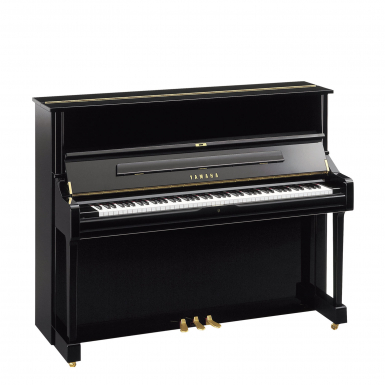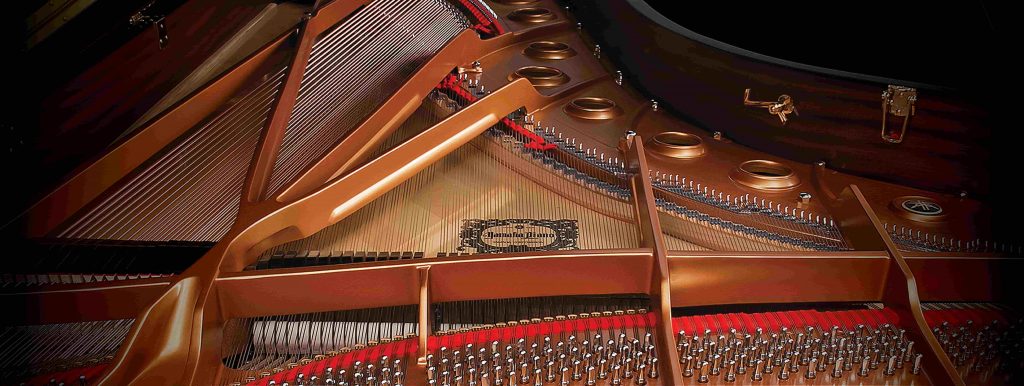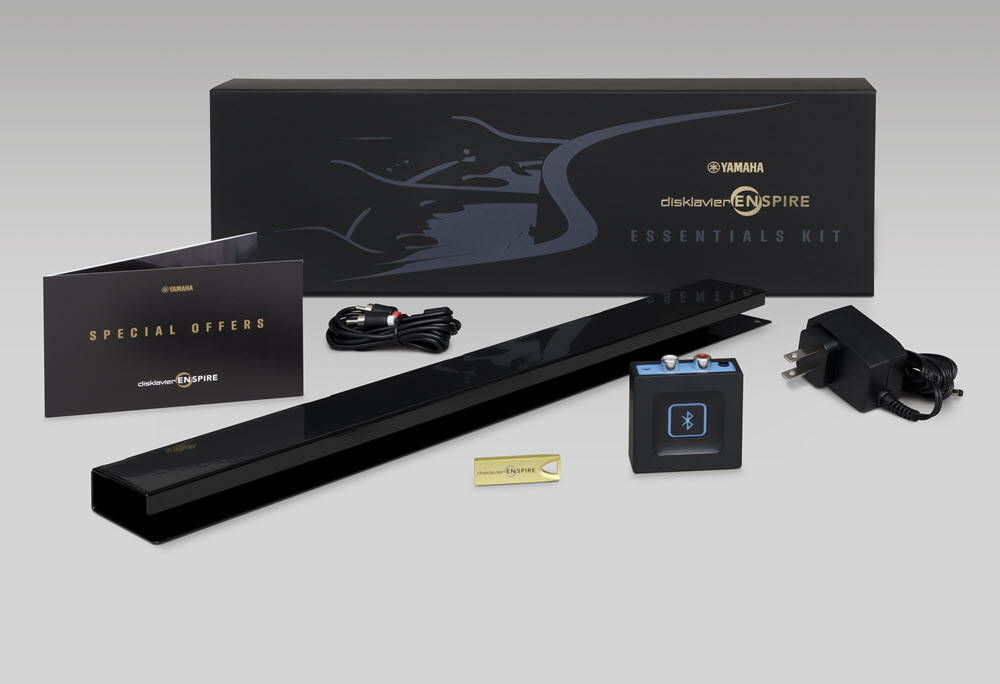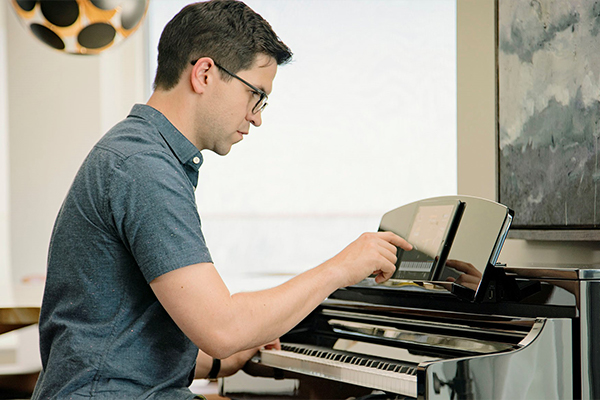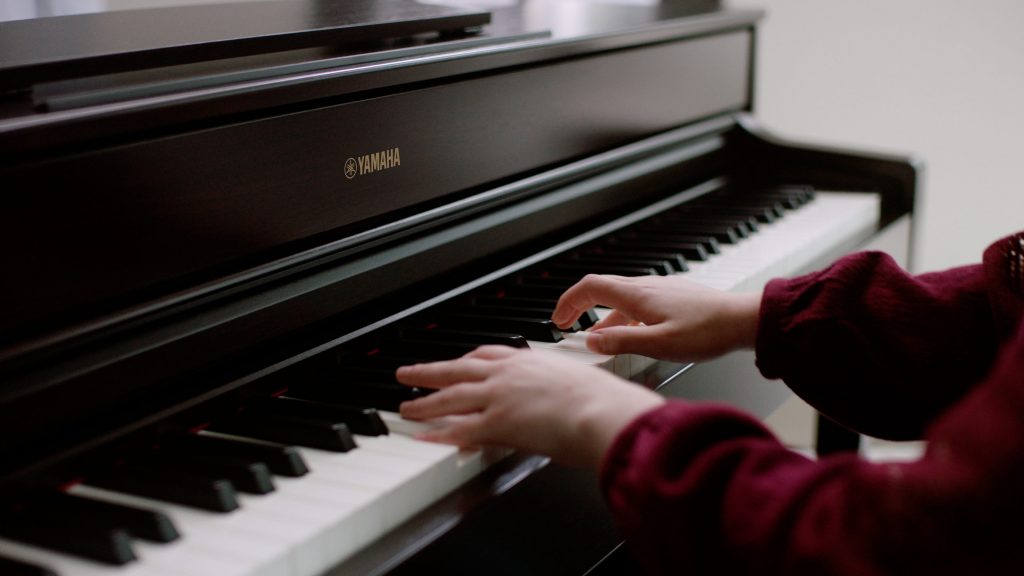Tagged Under:
What’s the Best Piano for Your Room?
A guide to selecting optimum piano size.
You’ve made the decision to buy a piano, and you’re eagerly anticipating the many hours of musical pleasure it will bring you and your family. But pianos come in so many different sizes and shapes, it can be difficult to know which is the best one to purchase.
Of course, you want your new instrument to sound great and look great. But first and foremost is the size consideration: after all, the piano has to physically fit in the allocated space. What’s more, the size of the room — along with the placement of the piano in it and other factors — will have an impact on sound quality.
Fortunately, there are some easy guidelines to follow that will help you determine the best piano for your space, whether you live in a cozy apartment or an opulent home. Let’s dig in!
Piano Types
As described in a previous blog posting, there are two basic types of pianos: grands and uprights. The most obvious difference is size (grand pianos are larger), but they also have different characteristic shapes due to the positioning of their soundboards, across which are stretched the strings. Because the soundboards of grand pianos are mounted horizontally, those instruments have a bigger “footprint” and a sleeker profile than uprights, which can look a little boxy by comparison.
Grand pianos are usually the choice of professional musicians in that they offer a richer, more dynamic sound than uprights, though there are exceptions, such as Yamaha YUS Series uprights, which offer a broad range of sonic tonalities more reminiscent of a grand piano. But uprights take up much less space and tend to be considerably less expensive than grand pianos, making them a favorite of music students and a staple of schools and conservatories all over the world.
Piano Sizes
Grand pianos vary in size from “Baby grand” models that can be as little as 4 1/2 feet in length, all the way up to “Concert grand” models, which can be 9 feet in length or more. (Note that grand piano length is measured from the key slip — the piece of wood in front of the keys on the keyboard — to the very end of the lid.)
Upright sizes range from small “Spinet” models (popular decades ago but rarely made today) to larger “Console” and “Studio” models that vary in height, up to 52″ or so. Interestingly, almost all pianos — both grands and uprights — are approximately 5 feet wide. This is due to the fact that they all provide a standard 88-note keyboard.
Yamaha offers a wide variety of grand pianos, from GB1K and GC Series baby grands (with 5′, 5′ 3″ and 5′ 8″ models) to the CX Series and SX Series (with lengths from 5′ 3″ to 7′ 6″) to the internationally renowned CF Series of concert grands (which range in length from 6′ 3″ all the way up to a full 9′).
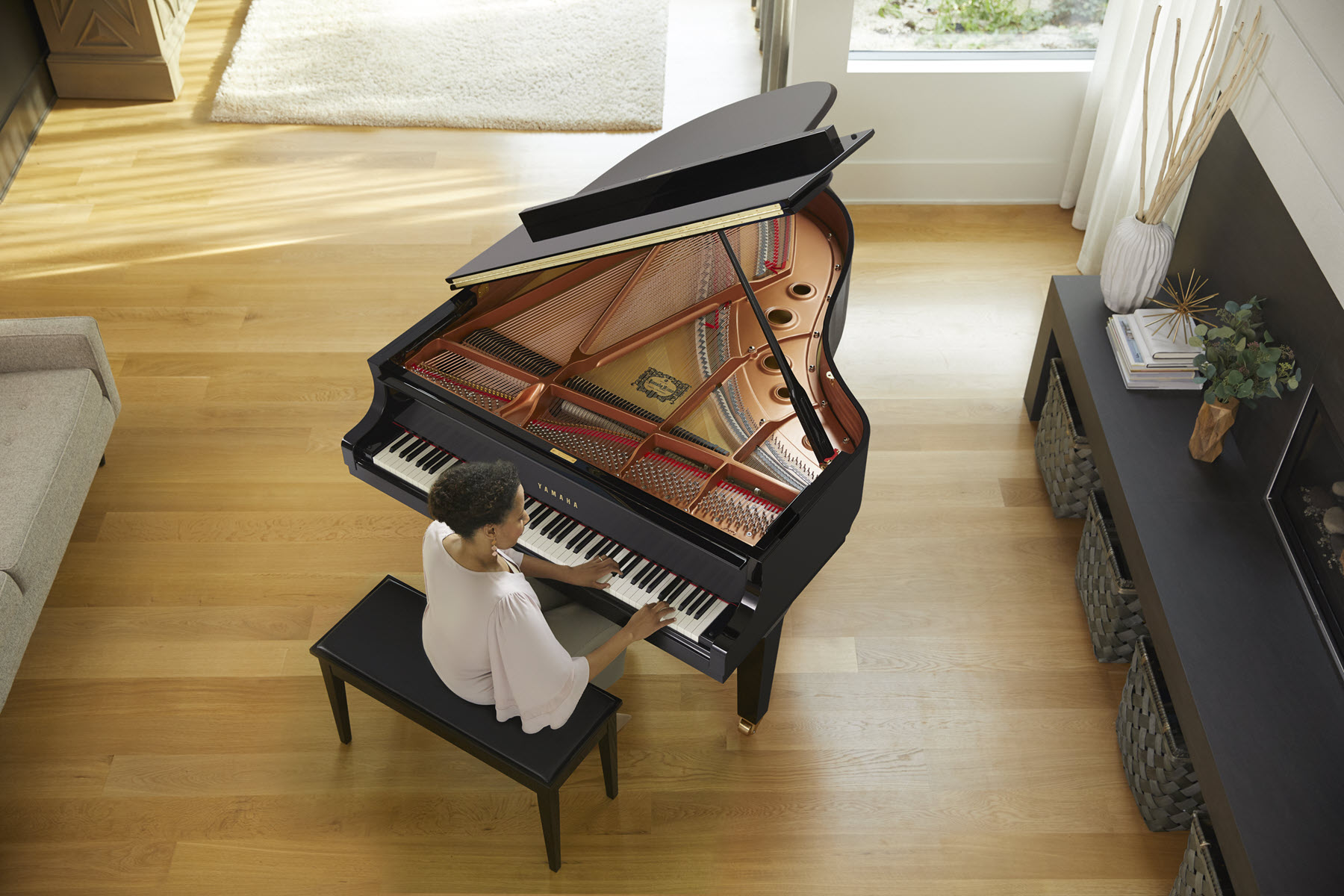
Yamaha upright pianos range from compact, entry-level P22 and b Series instruments to the U Series — the world’s most popular upright — to the aforementioned flagship YUS Series. The height of these pianos varies from 45″ to 52″, and their depth varies from a mere 21″ to 26″. This last dimension is particularly important since, as we’ll see, upright pianos are designed to be placed up against walls.
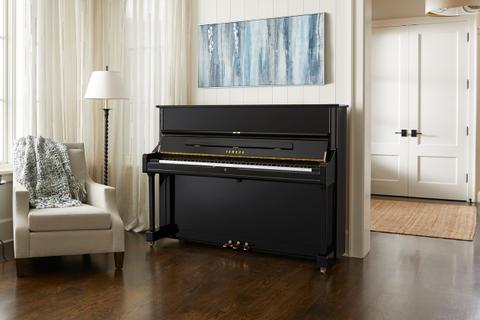
Which Piano Size Is Right for Me?
Needless to say, room size is a major determinant in deciding which piano is right for you: The larger the room, the larger the piano it can accommodate — and, in general, you should purchase the largest piano that your room will comfortably allow. Seems simple enough, but it turns out there’s a lot more to it.
For one thing, the increased surface area of the soundboard and the greater length of the strings in larger pianos translates to more vibrational energy, which increases projection — in other words, larger grand pianos can sound a lot louder than smaller ones. That said, most non-professional pianists don’t play with the velocity required to make larger pianos project to their highest potential, so it’s unlikely you’ll be filling a large room with sound when playing leisurely. (Interestingly, larger grand pianos can also be played more softly than smaller ones. This is due to the longer key length, which supports better physical control over hammer velocity. That’s why a concert grand piano is easier to play at lower volumes than a baby grand.)
You’ll also need to factor in whether or not other people in the room (or in adjoining rooms) will be disturbed when you’re playing. This leads to the issue of room treatments: If there’s lots of soft furniture in the room (such as sofas or easy chairs), carpeting on the floor and/or drapes or curtains on the walls or windows, the piano will be a lot quieter (and the sound will travel a much shorter distance) than if the room has a hardwood floor with little furniture, drapes or curtains to absorb the sound. A grand piano might be overbearing in a room like that, whereas an upright would probably sound fine.
That said, there’s no ignoring the fact that grand pianos often have a more pleasing aesthetic than uprights. If you’re set on buying a grand rather than an upright, and your room has the space to accommodate it, that’s fine, but you’ll probably be better off with a baby grand, or one of the smaller full-size grands, as opposed to a larger model.
Here’s why: The physics of sound propagation leads to the rule of thumb that, for optimum sonics, the total length of the walls of the room should be at least ten times bigger than the length of the piano. A 9-foot concert grand piano, for example, should ideally be placed in a room that has 90 feet or more of total wall length … and few living spaces meet that criteria!
A very large grand piano is therefore usually not a good choice for a typical living room. That’s one reason why these instruments are called “concert” grands — they’re really designed for the concert hall. Their sound doesn’t fully propagate for many feet, so someone standing nearby (or someone seated at the piano, playing) will not hear the instrument at its best, whereas an audience member in the tenth row of a large venue would. This is true regardless of how well made the instrument is, and even if the room is equipped with all the necessary materials to absorb sound.
Tip: It can be helpful to get a large piece of drawing paper and trace an outline on it of the dimensions of the piano you’re considering purchasing. (Dimensions like the ones shown below are readily available from the manufacturer or dealer.) Be sure to add an extra 2 feet to the depth of the outline to allow for when the bench is pulled out while you’re playing.
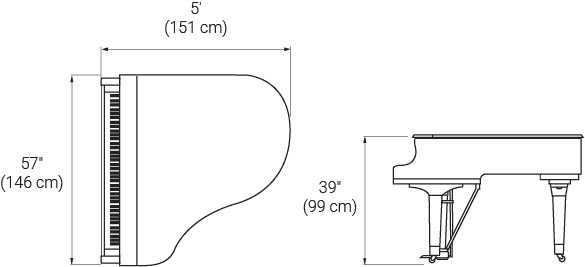
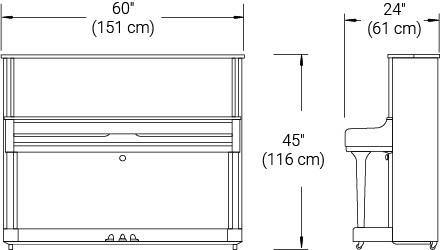
Piano Placement
As mentioned previously, upright pianos are designed to be placed against a wall. This positioning not only yields optimum sound, it also gives you the best use of available space, particularly in small rooms. (There’s an aesthetic consideration too, in that the backs of upright pianos are rarely finished.)

Grand pianos, on the other hand, sound best when they’re out in the middle of a room, or placed at a 45-degree angle in a corner of the room. However you position it, you’ll want to ensure that the pianist — especially if it’s you! — will be able to see the rest of the room (or perhaps even out a window) instead of having to face the wall.
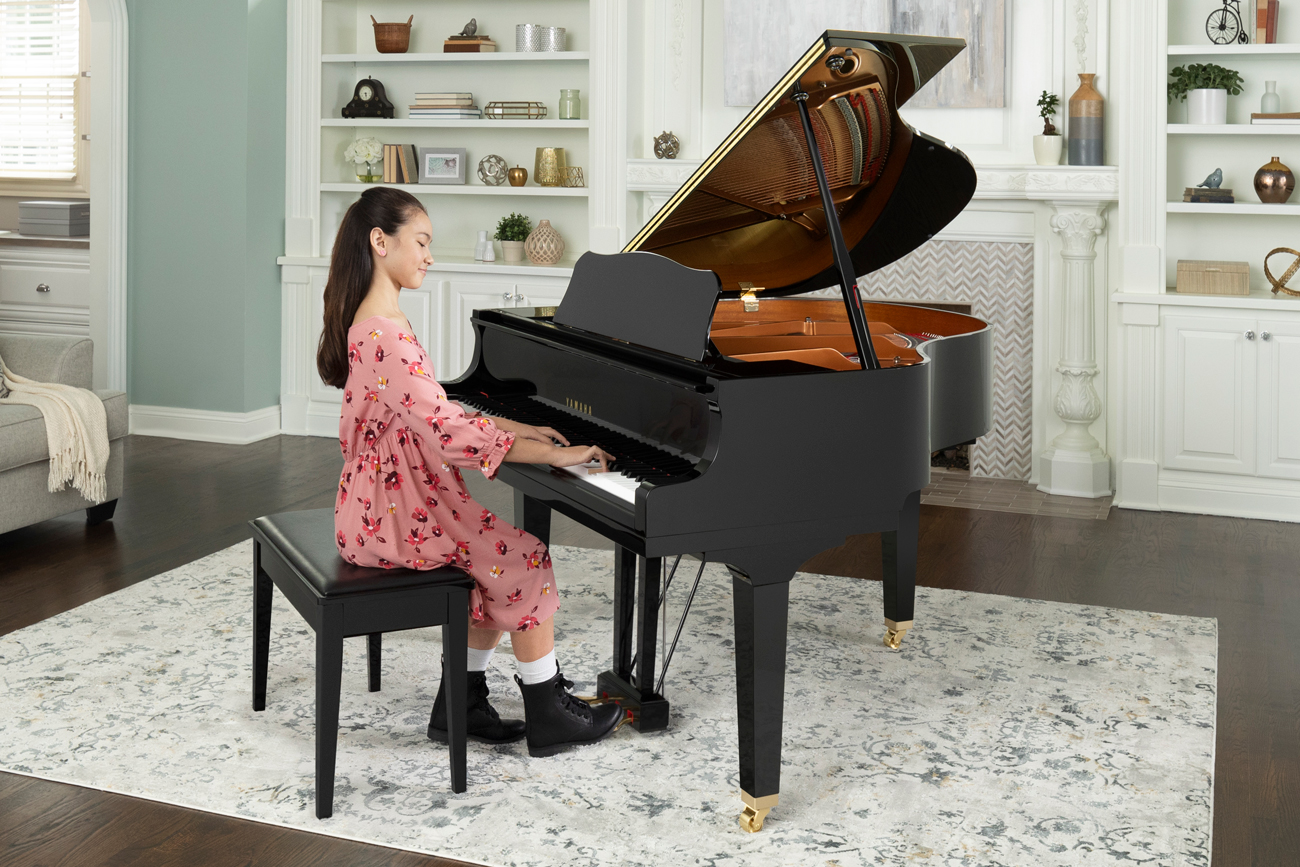
It’s also important to protect your piano from any sudden climate changes that can harm the instrument. For example, you should never place a piano under direct sunlight. While having it near a window may look aesthetically pleasing, the heat of the sun could easily damage it. Similarly, it should not be placed near air vents, as any temperature changes will affect the instrument.
Piano AR
Yamaha offers an amazing online augmented reality tool called Piano AR that can help you decide where to place your piano … even before you buy it!

Simply go to the Piano AR website on your mobile device’s browser and select the Yamaha upright or grand piano model you want to view, then tap the “View In Your Room” button and scan the area where you would like to place the selected piano. You’ll be shown a virtual image of the piano as it would appear in your room — you can even rotate the piano or change the finish color so you can see how it will blend in with your décor, then take a picture of how it would look as you explore different options. With Piano AR, it’s never been easier to envision the piano of your dreams in your home.
The Digital Option
If you have your heart set on owning a grand piano but your available space only allows for an upright (or if you already own a grand but are downsizing to a smaller space), there’s an easy solution: Consider purchasing a digital piano instead. Not only do many digital pianos offer the sound of a grand (in addition to many other kinds of instrument sounds — a feat of technological wizardry that not even the finest acoustic piano can provide), they also take up much less space than even an upright. They also allow you to practice silently by simply plugging in a set of headphones, and are much easier to maintain than acoustic pianos — for one thing, you never have to tune them!
Yamaha offers many different digital pianos, from portable models to beautifully crafted ARIUS YDP Series instruments to the full-featured Clavinova line, available in both upright and grand piano cabinets. Many include digital samples of the revered Yamaha CFX and Bösendorfer Imperial concert grand pianos found on the finest concert stages the world over.

And then there are hybrid instruments like Yamaha SILENT Pianos™ and the TransAcoustic Pianos™. These have the genuine sound and feel of an acoustic piano … but they also allow you to decrease volume or even mute the sound altogether, making them capable of fitting into anyone’s lifestyle.
Whichever type of piano you end up purchasing — grand, upright or digital — you’re sure to enjoy many happy hours of making music. Time to start measuring!
Check out these related blogs:
Here’s What to Look for When Shopping for an Acoustic Piano
What’s the Difference Between a Grand Piano and an Upright Piano?
Why Aren’t There More Than 88 Keys on a Piano?
What’s the Difference Between a Digital Keyboard and a Digital Piano?
Which Digital Piano Is Right for Me?
Click here for more information about Yamaha pianos.
Click here for more information about Yamaha digital pianos.
Click here to locate your local authorized Yamaha piano dealer.











